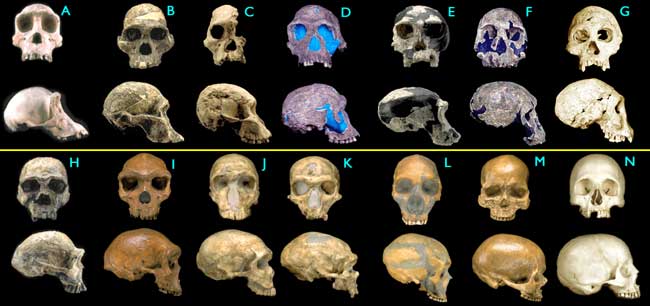So let the Darwinian element here try it...let any evolutionist try to establish the genetic formula for our supposed 'common ancestor' from which we were supposed to have diverged some 3.7 million (approx) yrs ago.
It should be easy since nature supposedly did it blindly.
But since only organisms on the species level produce offspring easily and those on the genus level reproduce sterile offspring then what recourse do they have in establishing that nature can evolve one type of organism into a classifiably, identifiably different organism?
But let's notice the limitations God place upon living organisms in genetic expression of the various gene pools of living things. Take for instance:






It should be easy since nature supposedly did it blindly.
But since only organisms on the species level produce offspring easily and those on the genus level reproduce sterile offspring then what recourse do they have in establishing that nature can evolve one type of organism into a classifiably, identifiably different organism?
But let's notice the limitations God place upon living organisms in genetic expression of the various gene pools of living things. Take for instance:

Different species of Equs can mate but the offspring is sterile. And since one cannot divide the 63 chromosomes in half, the conclusion about the total for n = ? It's a mystery. An odd number of chromosomes (2n=63) is not divisible by two. The haploid number of a mule is not 31.5 because you can't have half of a chromosome in the gametes. Such animals can mate with horses or with donkeys and sometimes reproduce offspring but they are usually infertile.
Then there is this:


The depicted felines above are all in the family Felidae, but no matter how many times these organisms are cross bred no one has every seen anything but lions & tigers but no bears. Oh, my! Sounds ridiculous. Of course it is but none has ever seen felines reproduce offspring that is anything other than Felidae. The same with Zebras/horses; the same with donkeys/zebras; the same with turkeys/chickens. etc.
Let's go further:
This is called a 'rabbage'; a cross between a raddish & cabbage. (family: brassicaceae)


Such plants have been known to grow up to four feet long in some places. The formula for producing such offspring is illustrated above and it well known among botanists and/or geneticists.
Now, where is the genetic formula for the divisionary break between humans (homo) & our so-called common ancestor (homini)?
Since humans have 46 chromosomes and chimps have 48 chromosomes then why can't humans and chimps successfully cross? Where is that missing element in what should be just as easy to identify as were the organisms I mentioned above?
This problem here is referred to as chromosomal polymorphism: a condition where one species contains members with varying chromosomes counts or shapes. But so far, there have been no scientifically verified specimens of a human/ape hybrid.
Where is the genetic formula which reveals the divergance of homo sapiens from chimps and why has there never been anything in the world such as a 'humanzee'? We have ligers, tigons, zorses, & rabbages but no 'humanzee's'. Why?
Keep in mind that the question here is two-pronged.





